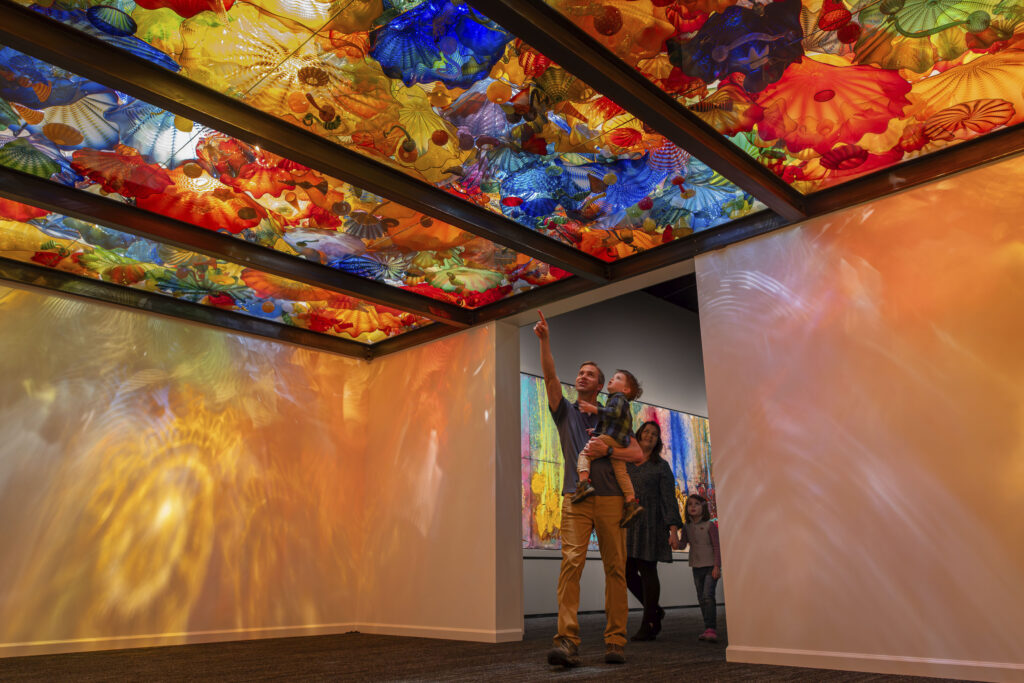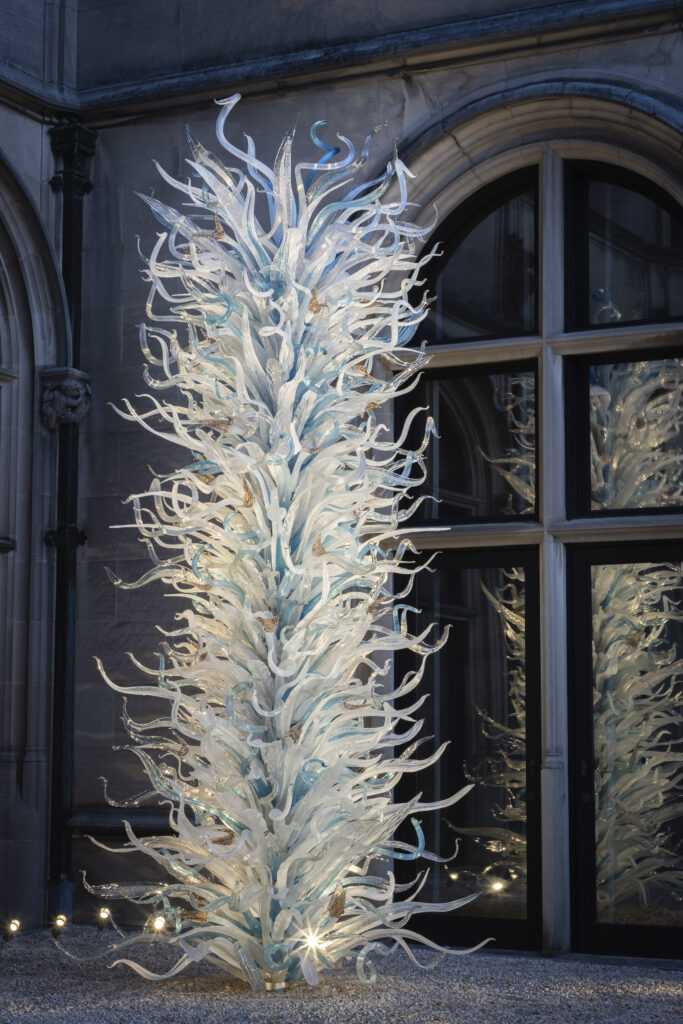
Biltmore, Asheville, North Carolina, installed 2024
© 2012 Chihuly Studio. All rights reserved.
These days, it is ever so easy to forget that we are human beings. With the to-do lists, the text strings, the Amazon returns, and the schedules to organize, sometimes — quite regularly, actually — we can feel more like a machine or a branch of the military than a person, calculating and executing and conquering the stuff of life instead of observing, enjoying, and engaging it.
But occasionally, something trips the breaker, and all that productivity goes offline. It can be the common cold or a summer vacation or even an unexpected phone call from an old friend. Not long ago, something drew me into my humanity that I did not see coming at all. I had been invited to a Chihuly art exhibit at the Biltmore Estate in Asheville, North Carolina.
To be fair, the pump had been primed. I had already toured that lovely old home with all its grand opulence and palatial design, and my eyes were getting rather used to beautiful. A regular old art gallery was going to be the low point, I figured. How could anything beat the Beauty and the Beast-esque dining room the Vanderbilts employed to feed 62 of their closest friends, all at one table?
Just inside the first section of the exhibit sat two glass blown vases made of sand and fire. That’s all they were: two vases, side by side. The darkness around them consumed the same light these two threw back in my direction. With their color and verve, they called for my eye. They were all fire and ice, with an invitation. I traced the outline of the silhouette. Somehow, these vessels understood me. Through the lens of their existence, I better understood myself, which is the mystery of truly good art, whether made by a well-trained expert or the hand of a young child. More importantly, however, I understood something utterly fresh about the God who created me.

Biltmore, Asheville, North Carolina, installed 2024
© 2023 Chihuly Studio. All rights reserved.
In his book Naming the Animals, Stephen Roach reflects on Genesis 2:19: “Now out of the ground the LORD God had formed every beast of the field and every bird of the heavens and brought them to the man to see what he would call them. And whatever the man called every living creature, that was its name.” Roach writes, “Our creativity bears witness to God’s original act, and echoes the divine unction that brought us into being. In a sense, all art and creativity declares His glory, even apart from the content or the intent of the artist. As the Author and Originator of all creativity, His signature is written on the creative act itself.”
Nature and its elements sing praise to God in their most raw, naked state. But when sand and fire, one of many compatible natural combinations, flirt and fight and finally give way to one another, they are melted into something else, borne anew into a creation made first by God, and then by man. The artistic dance of Eden echoes through time. From dust we were made; to dust we shall return. But in between, God brings his good creation to man to see what we will make of it.
Dale Chihuly has worked for over five decades as a glass artist and his work has exhibited worldwide many times. At one point, large-scale installations happened overnight, suspended above the canals of Venice, to the delight of bleary-eyed, cappuccino-drinking Venetians at sunrise.
In the mid-1970’s, Chihuly lost an eye as he was thrown through a windshield in a car crash, which left him with a black eye patch. Since then, he has changed his POV. Instead of standing at the top of the pipe, blowing the glass himself, he moves through an intimate team of glass blowers, all working at the same time. He leans forward at the hip and then out again, moving and pacing and guiding the team, who never break motion themselves.
“One can only wonder what kind of genius thought of blowing human breath down a metal tube, forming a bubble inside a molten blob of glass,” Dale Chihuly said. “And to think that this molten blob of glass is made only of silica or sand, the most common material in the world, that can be transformed from a solid to a liquid to a solid just from fire. For me it’s the most mysterious and magical of all the inventions or materials that mankind has invented or discovered.”
Sand and fire set in the confines of the Chihuly’s well-worn studio is not unlike the low burn of the human journey, which every person feels along the way, sometimes as thin as candlelight and other times flaring and sparking like a bonfire. God, the Artist, is capable of using the swing and sway of our length of days to shape living eternal beauty, beauty that will continue when all we see before us now is burned away and only what was born of him remains.
As imago Dei, we are called into delightful communion with him in this endeavor. Roach writes, “All the materials we need are already here, in God’s creation. As collaborators with the Creator, we are to establish a culture of beauty and nourishment. In a phrase, we are to extend the Kingdom of Heaven.” I know nothing of Chihuly’s spiritual state, but he has exercised his gift of engaging the natural world to create beauty. Merely seeing it in person invited me to a posture of worship.
Any art has the capacity to do this — to point us to the Artist behind the artist — because it’s not merely the movement or the music or the making that’s the good stuff. It is the earth and fire, the color and light, the song and story, the body and soul, all consummating in a sacred, exhaled response meant for the heart of our Maker: Yes, indeed.
It is good.





